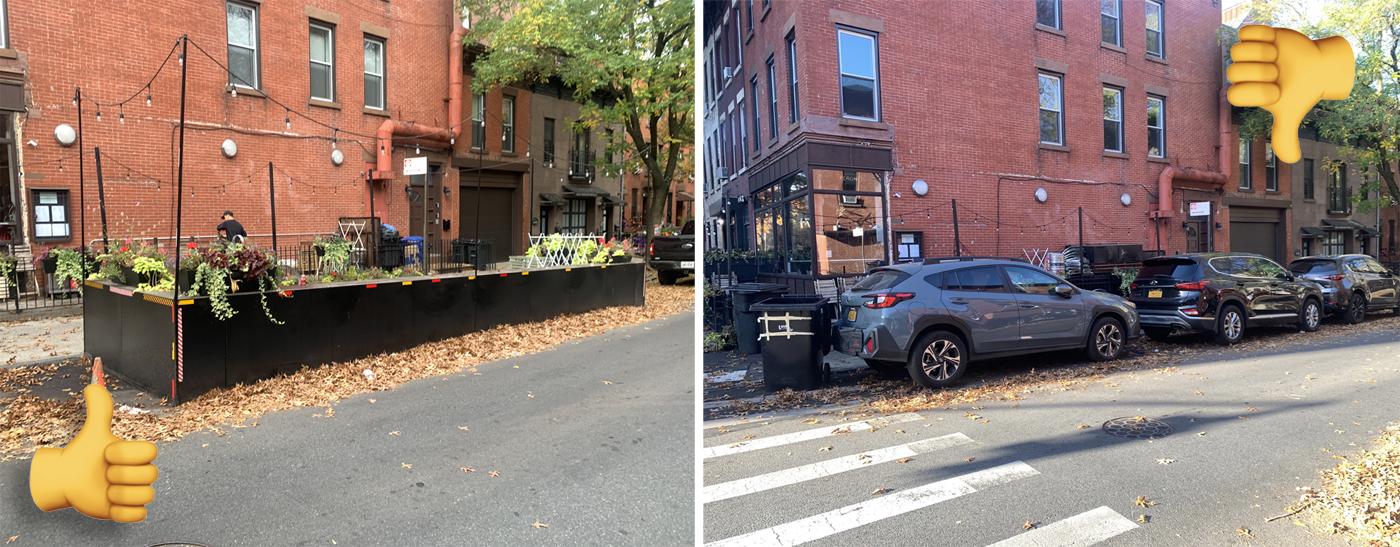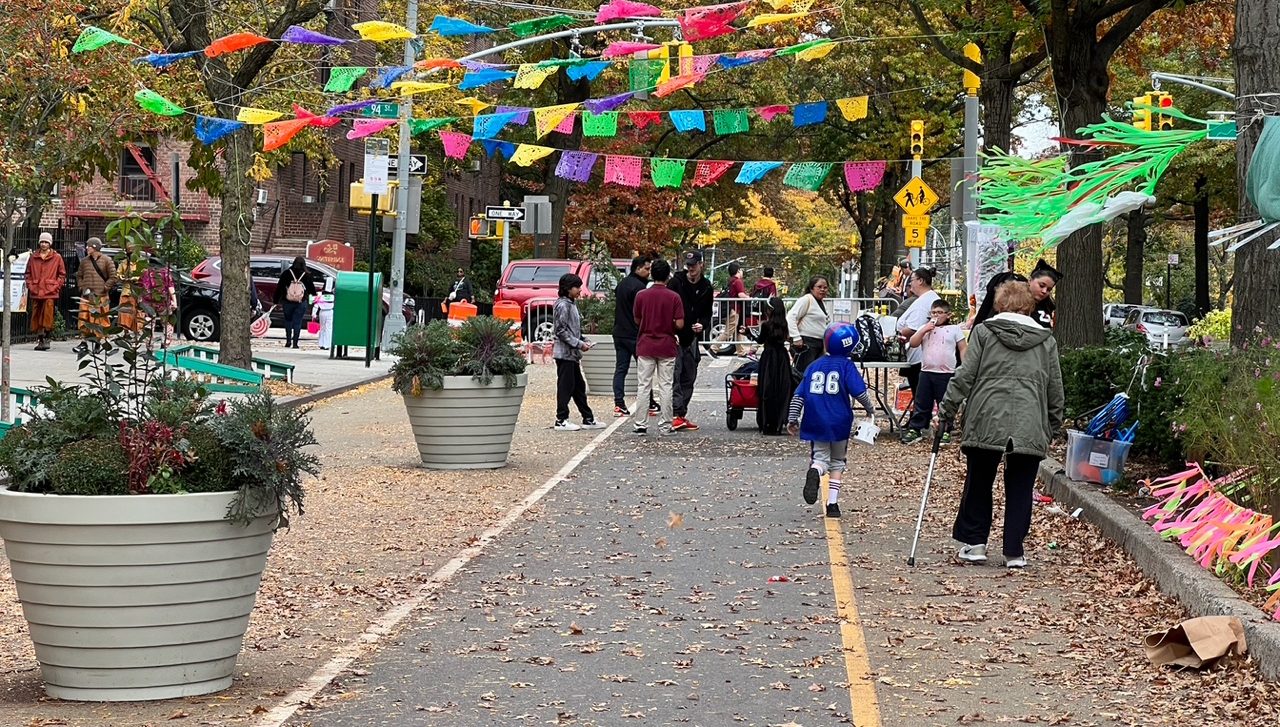
The latest pedestrian fatality report from the Tri-State Transportation Campaign finds that New York City’s widest and most heavily-traveled streets continue to be the most dangerous for walking.
TSTC's "Most Dangerous Roads for Walking" report ranks streets in terms of total pedestrian fatalities from 2011 to 2013, based on data from the National Highway Traffic Safety Administration. For the second consecutive year, Jericho Turnpike in Suffolk County and Hempstead Turnpike in Nassau saw the most fatalities, with 20 and 11 deaths, respectively.
But most of the deadliest streets in the region are in New York City. Motorists fatally struck 10 pedestrians each on Grand Concourse and Flatbush Avenue during the three-year period, the highest total number among all city streets. Woodhaven Boulevard and Queens Boulevard were also near the top of the list.
Of the streets flagged by TSTC, Woodhaven and Queens Boulevard are in the early stages of NYC DOT redesigns. While many of the other arterial streets in the report are highlighted as priorities in DOT’s Vision Zero borough pedestrian safety plans, those documents don't commit to specific fixes, pledging instead "at least 50" street improvement projects -- which can be as small as a single intersection -- per year citywide.
Here are the number of pedestrian fatalities from 2011 to 2013 by borough, and the streets in each borough with the most fatal crashes:
- Brooklyn (130 total): Flatbush Avenue (10), Eastern Parkway (7), Broadway (5), Atlantic Avenue (5)
- Queens (127 total): Woodhaven Boulevard (9), Queens Boulevard (8), Rockaway Boulevard (7), Jamaica Avenue (6), Northern Boulevard (6), Hillside Avenue (5)
- Manhattan (95 total): First Avenue (7), Broadway (6), Second Avenue (5), Third Avenue (5), Seventh Avenue/ACP Jr. Boulevard (5), Ninth Avenue/Columbus Avenue (5)
- The Bronx (83 total): Grand Concourse (10), White Plans Road (6), Bruckner Boulevard (4), E. 233rd Street (4), E. Fordham Road (4)
- Staten Island (18): Forest Hill Road (2), Richmond Road (2), Victory Boulevard (2)
Each borough fact sheet, linked above, includes a map of fatality locations, coded by the age of the victim. People over the age of 60 in the region are twice as likely to be killed while walking than younger pedestrians, according to the report press release. An AARP survey cited in the press release identified drivers failing to yield, poor sidewalk infrastructure, and short crossing times as major problems for older pedestrians.
New York State continues to neglect its responsibility to make streets safer, TSTC says. “Vision Zero should be a goal for the entire state of New York given that New York State has the highest fatality rate in the nation for pedestrians and bicyclists at 29 percent,” notes TSTC Policy Coordinator Nadine Lemmon in the press release. “While NYS released nearly $143 million in federal funding for pedestrian and bicycle projects throughout the state, the state itself has not yet established a dedicated fund for these projects in the state budget.”
TSTC recommends New York electeds and agencies:
- Increase New York City’s contribution for redesigning “arterial” streets and “fully implementing Vision Zero in the NYC Budget and capital plan.”
- Dedicate $20 million in state funds annually for pedestrian and cycling infrastructure, in addition to funds already allocated in the state budget and NYS DOT capital program.
- Amend NYS DOT’s “Preservation First” policy to include new bike and pedestrian infrastructure; amend state Complete Streets law to include maintenance and repair projects.
- Standardize reporting of traffic fatalities across local, state, and federal agencies.
- Grant localities home rule to set their own speed limits.
“While about 15 percent of the total lane miles in the three states are classified as arterials, over 50 percent of pedestrian fatalities occurred on this type of road,” said TSTC analyst Ryan Hall. “In downstate New York, 45 percent of pedestrian deaths occur on roads classified as arterials.”
Just after the TSTC report was released this morning, Transportation Alternatives announced a Thursday press conference to call on New York City to commit more funds to rebuild the “multi-lane speedways” that account for a disproportionate number of traffic deaths. Council Member Ydanis Rodriguez, chair of the council transportation committee, and Public Advocate Letitia James are scheduled to attend. The presser starts at 10 a.m. on the City Hall steps.





